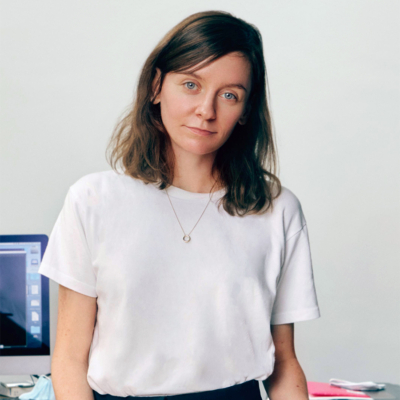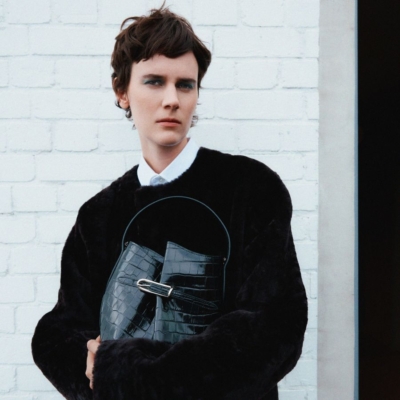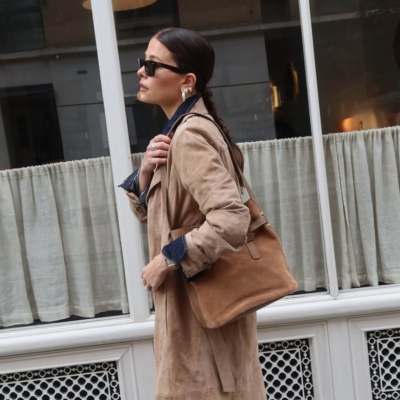Paris-based Eibhlín Doran on working with luxury fashion brands, the Irish design scene and advice for creatives …
As part of Irish Design Week, Eibhlín Doran is taking part in an evening exploring the intersections of fashion, craft and collaboration to amplify cultural narratives, positioning Irish creativity on a global stage. Alongside designer Sinéad O’Dwyer, and London-based writer and cultural commentator Anastasiia Fedorova, Eibhlín will delve into the role of design in shaping heritage, identity and social change. Read our interview with the creative director below …
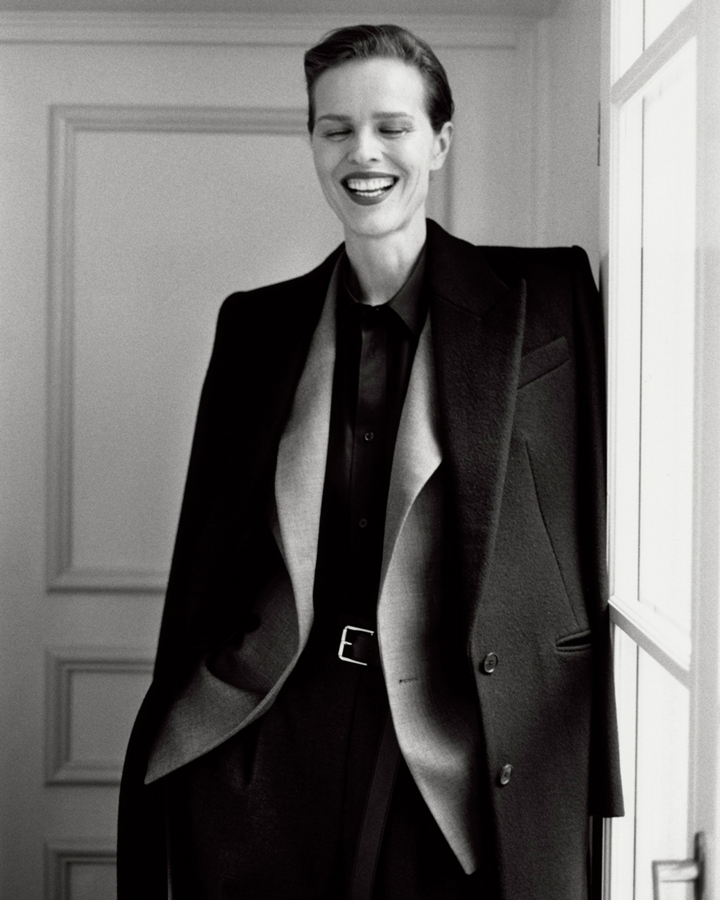
What is your proudest campaign to date and with which brand?
I think it has to be one of the more recent pre-collections campaigns for Givenchy, featuring supermodel Eva Herzigova, Lara Menezes – a feistier energy – and Emeline Hoareau, who is plus-size and an absolute goddess. When we first discussed the direction, Sarah Burton, Givenchy’s creative director, said something that really stayed with me: the press always ask her about her muse or the type of woman she designs for and her answer is, “I dress all women.” This shoot was rooted in that idea. It was about the women themselves and capturing the essence of what Sarah is trying to express, with the focus not always being the clothes.
We also wanted Sam Hellmann, as a woman photographer, to portray them as sexy and powerful – in the same spirit that photographers like Helmut Newton or Juergen Teller have done – but with the crucial difference that it’s a woman looking at women. That shift changes the narrative entirely and you can feel it in the images.
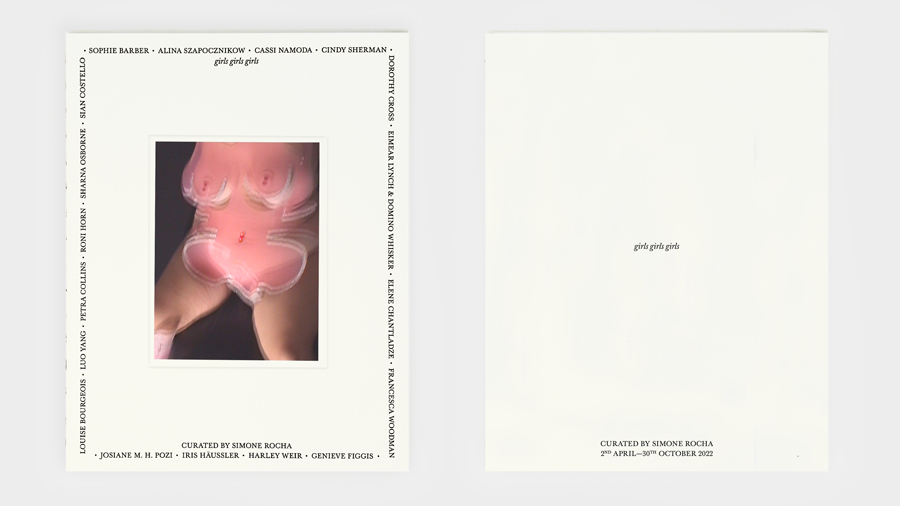
Which project helped shape how you work now?
A project that genuinely shaped how I work today is the book I created for Simone Rocha for her exhibition Girls Girls Girls at Lismore Castle. It brought together a wide range of female artists who inspire her – from Louise Bourgeois to Sian Costello, who had just graduated from Limerick School of Art. The challenge was finding a visual direction that honoured each artist equally, without creating hierarchy, while still allowing Simone’s voice to come through. The cover design embodied that: the artists’ names formed a frame in uppercase lettering, reminiscent of war memorials or monuments, where women’s names are historically absent. It created something impactful without placing one artist above another.
It was bound with an open pink thread, a small detail, but one that felt like Simone’s voice literally holding the book together. As someone who loves print as much as image, the project also reinforced for me how meaningful it is to bridge art, fashion and printed matter – to create objects that last and have cultural weight. More than anything, it highlighted how art can deepen and strengthen fashion work.

What is your impression of the Irish fashion design scene?
There’s so much coming out of Ireland right now – from music to literature to fashion – and it’s incredible to see how visible it has become internationally. I’ve watched brands like Standing Ground grow while staying deeply connected to their roots and Irish heritage, and designers like Róisín Pierce and Richard Malone continue to push things forward in such thoughtful, distinctive ways.
But it’s not just the designers in the spotlight. Behind the scenes there are so many extraordinarily talented Irish people shaping the industry in major ways. Isabella Rose Davey, COO of Copenhagen Fashion Week, and platforms like Unfolding Presents with Ena Quinn and Niamh O’Donoghue are doing amazing work in championing emerging voices.
I studied in NCAD, so I’ve seen firsthand the level of talent and work ethic that exists there. The pipeline is strong, the community is supportive and the work feels grounded yet ambitious. It’s a very exciting moment for Irish creativity as a space where emerging voices and established names come together: where craft, collaboration and radical experimentation are celebrated, and where Ireland’s global reputation for creativity is amplified.
“It’s exciting to see Irish design being positioned not just as beautiful, but as culturally and socially meaningful on an international stage.”
What’s your advice to young prospective fashion designers or creatives hoping to break into the industry?
When I spoke to Michael Stewart about naming his brand Standing Ground, he told me that part of the name is a literal reminder to himself to “stand his ground.” I find that incredibly inspiring and I think it’s the best advice I could give to any young creative: stay close to what you care about. Follow the things you’re genuinely passionate about and work hard at them. Inspiration can come from anywhere: art, film, photography, archival fashion shows, books, conversations … the important thing is to stay curious and keep feeding that part of yourself.
I grew up in the countryside in Monaghan, very far from the fashion world of Paris where I work now, and I’m realising more and more that this distance was actually a strength. Because I didn’t grow up immersed in fashion, everything I learned hit home in its own way – I got to discover for myself, and I’m still discovering, what matters to me and what direction it can take. That kind of naivety, or outsider perspective, can be incredibly powerful. It helps you see things differently and stay honest to your instincts.
So, my advice would be: stand your ground, stay curious, work hard and don’t underestimate the value of where you come from. It can shape your vision in ways that make your work truly unique.
How is working for luxury brands with a distinct style: is there less creative freedom?
I actually find it really exciting to work within a luxury brand that already has a strong visual language. There’s something energising about taking an established vocabulary and interpreting it in my own way – pushing it, challenging it, twisting it so that it takes on a new meaning. My directors at M/M (Paris) used to say: “Make them dream.” Your job is to take what’s known and give back an evolved, elevated version of it.
A recent example is a publication I created for Saint Laurent for their Kate Moss campaign, photographed by Mert Alas. Anthony Vaccarello, creative director of YSL, referenced SEX – the iconic Meisel/Madonna book – which gave me a universe to bounce off while still shaping something that felt true to Saint Laurent and to his vision.
I also enjoy having that structure as it gives you something to push against. But it’s always a challenge to interpret someone else’s voice while staying true to your own. Sometimes the alignment with photographers or talents is effortless, and other times you realise that you’re just not the right fit.
For me, that balance – respecting a brand’s identity while bringing something new – is the heart of the work.
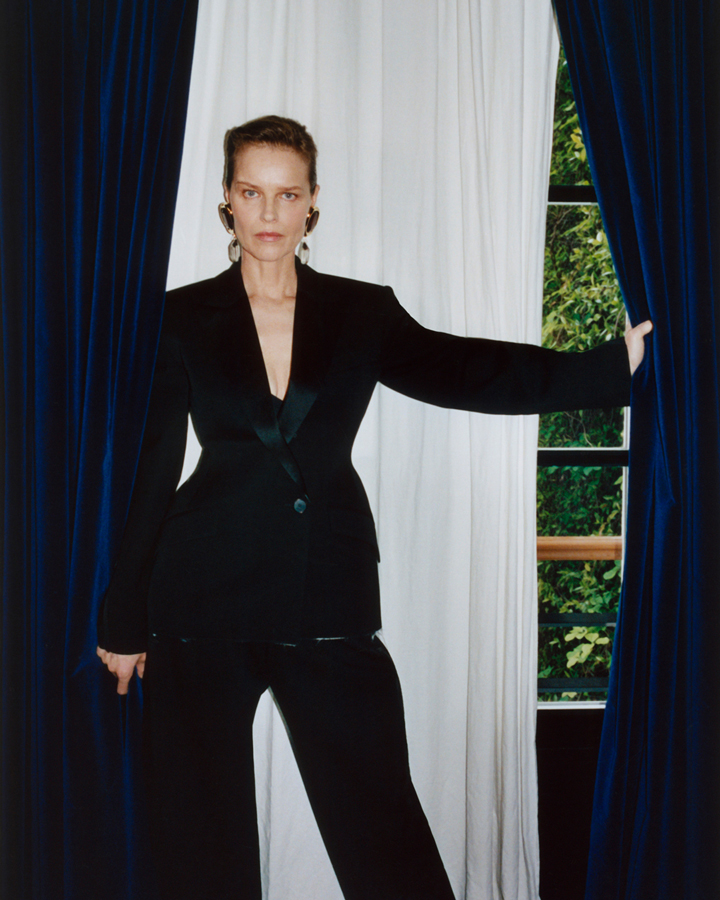
How do you approach the preservation of heritage in your design process? Do you ever draw on Irish elements?
Yes, definitely. I’m from Carrickmacross and Carrickmacross lace has come up a few times in my work in ways that feel very natural. During the Alexander McQueen rebrand, for example, I had to create a pattern for the packaging, so I went back to a book on Carrickmacross lace that my Godmother gave me. I referenced some of those motifs – they’re so unique and intricate – and reinterpreted them in a way that felt right for the brand. That book still lives on my bookshelf in my studio in Paris. The Irish elements may be subtle, but they’re really important to me. They’re part of my visual vocabulary and they surface at moments when I’m looking for something authentic, rooted or personal. It’s a quiet form of heritage preservation, but one that feels very true to how I work.
That’s part of why participating in Irish Design Week is so meaningful. Events like the one I’m part of, with Sinéad O’Dwyer and Anastasiia Fedorova, show how Irish heritage can inform global design conversations. They remind us that heritage isn’t static – it evolves, it collaborates and it becomes a living, shared resource that fuels innovation while keeping us connected to our roots.
It’s also been really interesting speaking with designer and director Natalie B Coleman about this – who is from the same area – and seeing how much that heritage has shaped her too, and how an old tradition can be reimagined in a modern, relevant way. @eibhlindoran
SEE MORE: Fashion Designer Sasha Donnellan On Girlhood And Irish Identity
We may earn a commission if you buy through affiliate links on our site.







